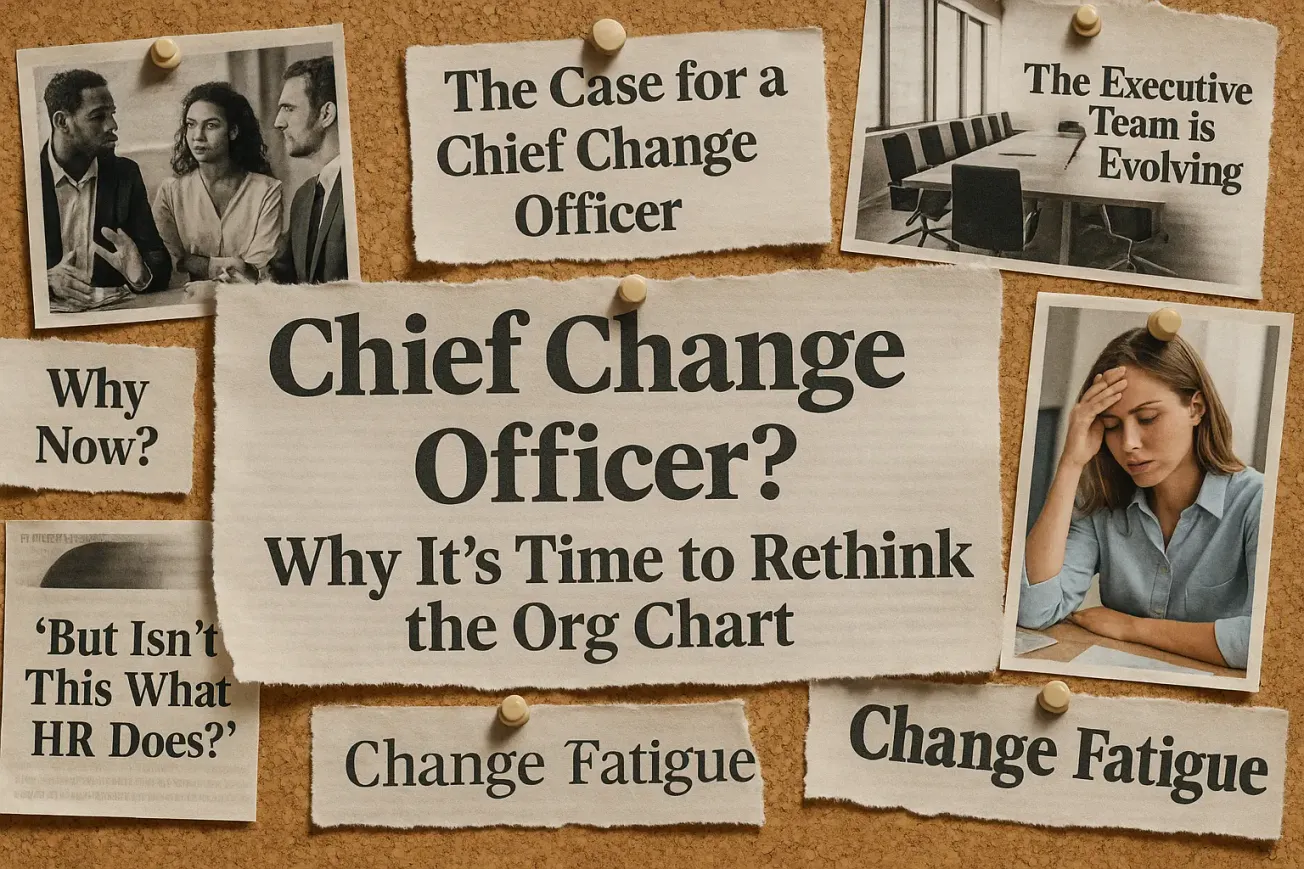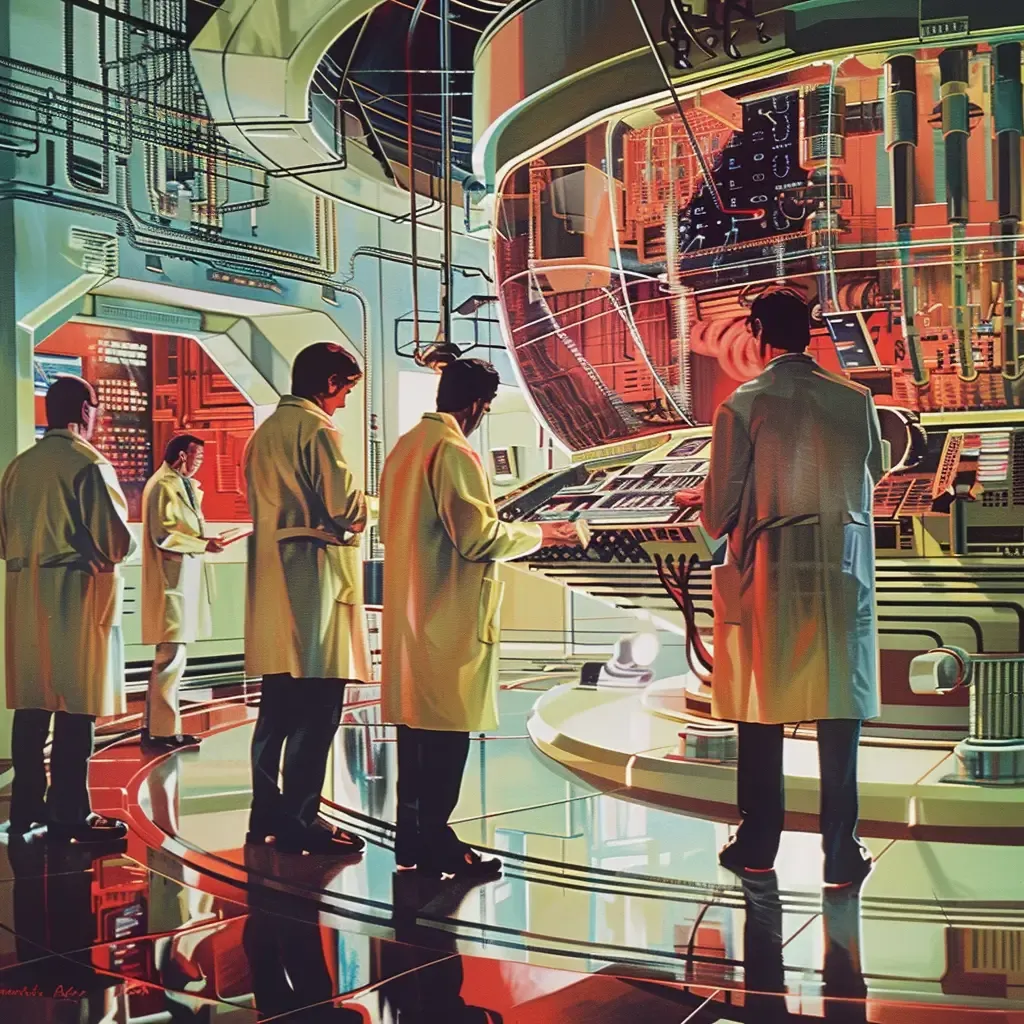When I first posed the question — Chief Change Officer? Why It's Time to Rethink the Org Chart — I expected some healthy debate on my post on LinkedIn. What I didn’t expect was the depth, range, and intensity of the responses.
What began as a single provocative article quickly evolved into something more: a living case study on the future of leadership and organizational design. Thousands of views, reactions, and comments on LinkedIn showed that this wasn’t just a conversation about a job title. It was a referendum on how we build organizations that don’t just manage change, but are built for it.
The community’s input spanned four distinct perspectives: those who believe the role is essential, those who see it as unnecessary, those looking toward the future of change itself, and those focused on the practical tools and models to make it work. Taken together, these voices form a richer, more nuanced blueprint for how we might make change central to our organizational DNA.
The Advocates: Closing the Execution Gap
The Advocates were united by a frustration I’ve heard countless times before — the execution gap. Bold strategies are crafted with care, only to fizzle in the chaos of implementation. As one person put it: “Adoption, resilience, and turning strategy into execution… if companies had anyone at the big table focused on these… success would skyrocket.”
For them, a Chief Change Officer (or Chief Transformation Officer) isn’t a luxury. It’s a necessity — a single point of accountability with the mandate to integrate digital, cultural, and structural change so that initiatives reinforce each other instead of competing for oxygen.
In their eyes, without this dedicated role, transformation devolves into a patchwork of disconnected projects. The CCO would provide enterprise-level air cover, aligning efforts and elevating change to the same strategic prominence as finance or technology. In short: make someone responsible for making the strategy stick.
The Skeptics: A Capability, Not a Title
The Skeptics brought a different lens: Is the absence of a CCO the problem… or is it a symptom of something deeper?
They argued that the ability to lead through change should be a core competency of every executive — not something outsourced to a specialist. “Change is a capability, not a position,” one commenter wrote. Others worried that adding a CCO could introduce bureaucracy or spark turf wars, with leaders perceiving the role as interference rather than partnership.
Their prescription? Elevate the change leadership skills of the entire leadership team. Build a culture where adaptability is a shared expectation, not a niche specialty. In this model, senior leaders work together to spot and close change gaps in real time, without waiting for a dedicated CCO to coordinate the effort.
It’s a compelling counterpoint: if adaptability is everyone’s job, does giving it to one person risk letting everyone else off the hook?
The Futurists: Change as a Platform
The Futurists looked beyond the job title debate entirely. For them, the real story is how the nature of change itself is shifting — from episodic initiatives to a constant, cumulative flow. “Change is continual… not a linear, episodic process anymore,” one comment read.
They described a shift from top-down change programs to what some call a change platform: a decentralized environment where employees initiate experiments, surface solutions, and co-own the process of adaptation. The goal is less about “rolling out” change and more about making it a natural, everyday activity.
Here, AI plays a dual role — both as a driver of disruption and a tool for navigating it. The Futurists saw AI as an amplifier for change leaders, helping predict readiness, personalize interventions, and automate routine work so human leaders can focus on creativity, relationships, and nuance. The future-ready change leader is as much a designer of human–AI collaboration as they are a manager of initiatives.
The Practical Strategists: Building the Toolkit
While others debated the role’s existence, The Practical Strategists zeroed in on the how. What skills, structures, and support systems would make a CCO — or any enterprise change leader — successful?
They emphasized that technical expertise matters less than certain human qualities: resilience, emotional intelligence, humility, and the ability to listen to dissent. The best change leaders create space for others to succeed; they act as partners, not “interfering menaces.”
One model that resonated was the hybrid Center of Excellence: a small, centralized team that defines best practices, governance, and tools while empowering business units to adapt and own their own change work. This strikes a balance between consistency and local innovation — a “best of both worlds” approach to institutionalizing change capability.
Final Thought
The original question was about a title. The answers I received were about something much bigger.
Whether an organization needs a formal Chief Change Officer is still up for debate. What’s not debatable is the need for leaders — individual or collective — who are change-capable, human-centered, and equipped to build platforms for adaptation rather than run one-off programs.
Our org charts send signals about what we value. If we’re serious about building organizations for continuous disruption, we need to make change a strategic centerpiece. And that means moving beyond coping with change to competing on it.
ChangeGuild: Power to the Practitioner™
Frequently Asked Questions
Q: What sparked this conversation about a Chief Change Officer?
A: The original article posed the question of whether organizations should add a CCO to the C-suite. The strong, diverse response from the community turned it into a broader discussion about leadership, organizational design, and building enterprises that are fundamentally built for change.
Q: What is the main argument from those who support the role?
A: Advocates believe a CCO closes the “execution gap” — ensuring strategies don’t fizzle in implementation. They see it as a dedicated role for integrating digital, cultural, and structural change, giving it the same strategic prominence as finance or technology.
Q: Why are some leaders skeptical about creating this position?
A: Skeptics argue change leadership should be a core skill for every executive, not just one. They warn a CCO could add bureaucracy or create turf wars, preferring instead to build collective change capability across the leadership team.
Q: How do the Futurists envision change leadership evolving?
A: Futurists see change as a constant flow rather than episodic events. They advocate for a “change platform” where employees initiate and co-own change. They also see AI as a force multiplier for personalizing, predicting, and streamlining change work.
Q: What qualities make a change leader effective, regardless of title?
A: The Practical Strategists stress human qualities over technical expertise — resilience, emotional intelligence, humility, and the ability to listen to dissenting voices. They recommend hybrid Centers of Excellence to balance consistency with local ownership.
Q: What’s the overall takeaway from the community’s response?
A: There’s no single answer on whether every organization needs a CCO. The consensus is that organizations must embed change capability into leadership, make it central to their strategy, and move beyond managing change to competing on it.
Been here before?
If you’ve wrestled with the “who owns change” question in your organization, you’re not alone. We help leaders design structures, roles, and cultures that make change a core competency—not a side project. Let’s talk about how to make that real in your context.
This post is free, and if it supported your work, feel free to support mine. Every bit helps keep the ideas flowing—and the practitioners powered. [Support the Work]








